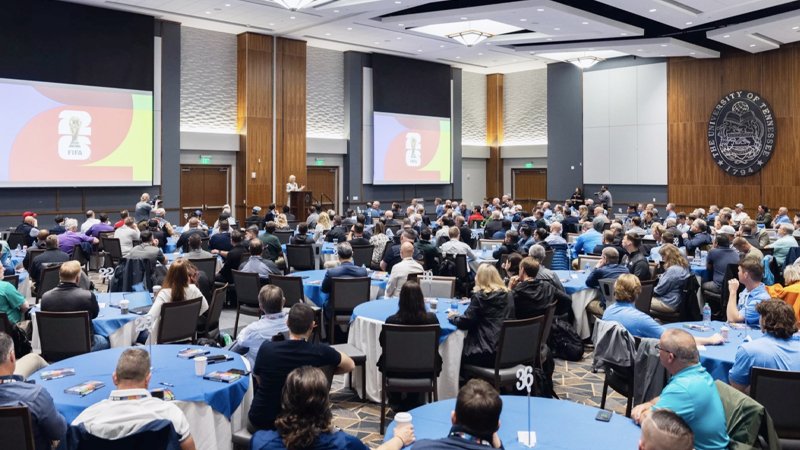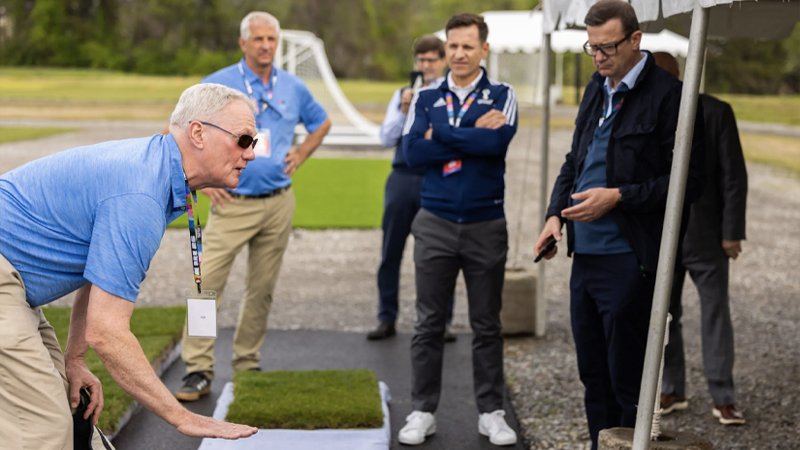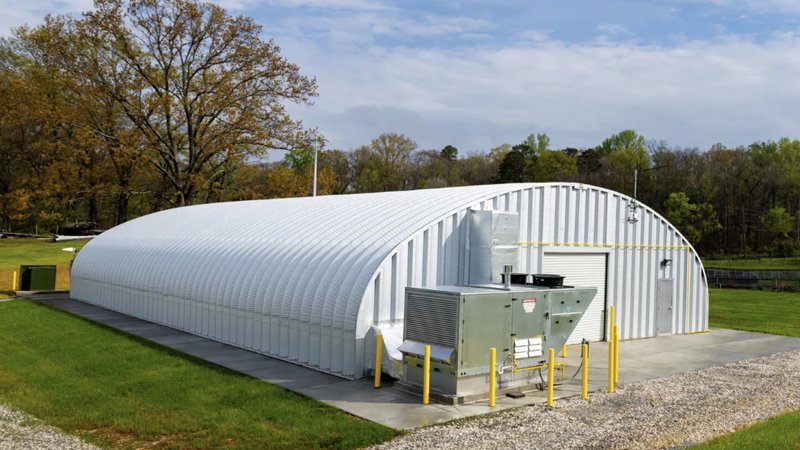
Imagine taking over a vacant parking lot to grow sod for a major golf tournament being held nearby for the purpose of matching growing conditions and reducing transportation costs.
Sounds crazy, but that could be happening in the world of sports turf when the FIFA World Cup comes to North America in two years. In fact, staging the 2026 event on multiple sites in the U.S., Canada and Mexico could have profound effects on turfgrass research in the U.S. might never be the same, and that is what scientists at Tennessee and Michigan State are hoping for.
Earlier this year, a delegation from soccer's ruling body in Zurich, Switzerland, made its way to Knoxville for the FIFA Pitch Research Field Day. The event was a gathering of more than 250 turf managers and others who will be involved in the event to be held at multiple sites in three countries in 2026. The purpose of their visit was to learn more about the research being conducted to provide consistent playing surfaces at 16 host stadiums, 84 training sites and 178 practice fields throughout the U.S., Canada and Mexico for 48 teams from around the world.
"The importance of the perfect pitch cannot be overstated," said Heimo Schirgi in a video released by FIFA.
"This is a symbol of the quality of the tournament. So this is of the highest importance for all of us."

Just like golf course superintendents are expected to produce the highest quality playing conditions possible, sports turf managers are expected to do the same for a global event like the World Cup, where play will span four time zones and numerous growing regions.
The challenge that lies ahead for scientists at Tennessee and Michigan State is providing surfaces that will perform in an identical manner in Toronto and Boston as it does in Los Angeles, Miami and Mexico City.
UT turfgrass professor John Sorochan, Ph.D., and Trey Rogers, Ph.D., of Michigan State have been assigned the responsibility of taking this plan from the drawing board to the playing field, and they are keenly aware of the significance of what lies ahead for the world of turfgrass research.
"Sharing our evidence-based research with end users for the World Cup 2026 and others from around the world means everything to me," Sorochan said in the FIFA statement. "Knowing that half of the world is watching something you have been a part of — it's hard to imagine the emotion that I'm going to feel."

Success will depend upon the ability to produce vast amounts of sod in rapid fashion on multiple sites around the country to make getting sod where it is needed as efficient a task as possible.
To conduct that research, UT has built a shade house at the university's East Tennessee Research and Education Center to duplicate conditions they will encounter in domed stadiums during the Cup.
"You know, the ability to produce a harvestable sod in as much as 16 to 20 weeks is paramount," Sorochan said in the FIFA release. "We can do something really fast, and we can also cut down on trucking costs, too. In theory, we could probably do this closer to urban areas and take up a large, vacated parking lot and actually grow the sod close to the stadiums, so you reduce transport costs as well."
Rogers and Sorochan have worked together on many previous projects, including pitch development for the 1994 World Cup that was played in 14 U.S. cities.
"If you can perfect this, which is what we are doing, this is our whole idea, you push turfgrass science forward," Rogers said in the statement. "You increase sustainability, you increase every part of the ability of the turf manager to be able to host multi-events in multi-use stadiums. It opens up every avenue, and it's the main reason that, for me, I got involved in this project."


